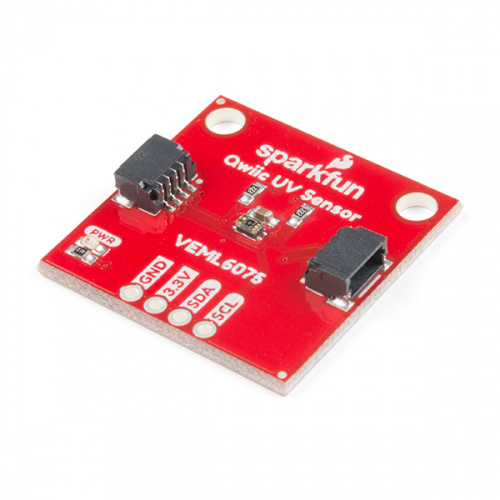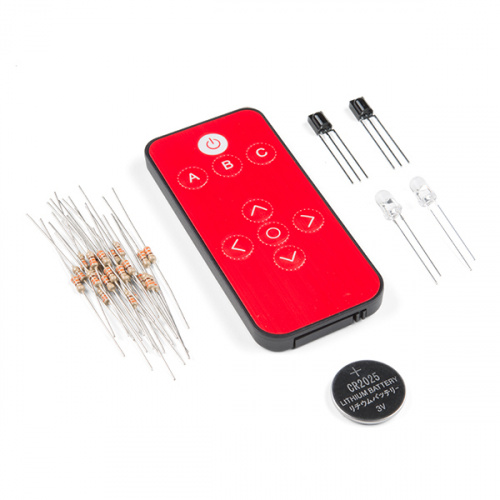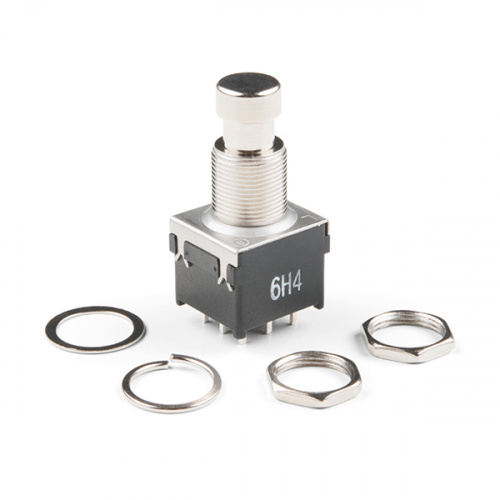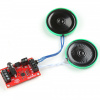Hello and welcome back to our last Friday Product Post before the holiday, here at SparkFun Electronics! This week we have a brand new sensor with Qwiic capabilities that allows you to detect and utilize Ultraviolet Light readings in you next project. We also have revised our Infrared Control Kit to make it even easier to get started. Last up we have a tiny I/O Expander IC in a DIP package and a stomp switch. It's Friday so let's take a closer look at all of our new products!
You see in UV?
The VEML6075 UV Light Sensor Breakout is SparkFun’s latest ultraviolet sensing solution. The VEML6075 implements a simple photodiode to measure the levels of UVA (320-400nm) and UVB (280-320nm) radiation. With this breakout, you will be able to read the intensity of these types of light in irradiance, and from there, calculate the UV Index. Utilizing our handy Qwiic system, no soldering is required to connect it to the rest of your system. However, we still have broken out 0.1"-spaced pins in case you prefer to use a breadboard.
Have you ever needed an easy and effective way to activate electronics from across the room? Infrared remotes are still the cheapest way to wirelessly control a device. We have designed the remote in this kit to be small, very simple, and low-cost. This kit includes an IR remote control, a couple of infrared receivers, some resistors, and even some IR LEDs. Using this kit, you can control your Arduino with the included remote control, or use the receiver and LEDs to communicate from one board to another. You can even use your own remote control, or use the kit to control your TV or stereo!
These are the sturdy little stomp switches that you find on guitar effects pedals. They’re 3PDT (three-pole, double-throw) type switches. These switches allow you to modify your effects for true bypass and lets you wire a status indicator LED. This is useful for stage performers, as it leaves no question if the "box" is on or off.
Add another eight pins to your microcontroller using a MCP23008 port expander. The MCP23008 uses two I2C pins which can be shared with other I2C devices, and in exchange gives you eight general purpose pins. You can set each of eight pins to be input, output, or input with a pullup. There's even the ability to get an interrupt via an external pin when any of the inputs change so you don't have to keep polling the chip.
And that's it for this week, folks! Most of us are going to go spend some time with our friends, family, and loved ones for the next few days but we'll be back with plenty more new products soon! As always, we can't wait to see what you make! Shoot us a tweet @sparkfun, or let us know on Instagram or Facebook. We’d love to see what projects you’ve made!
We'll be back next week with even more fantastic new products!












Great new product post (and my wishes for a happy holiday for everyone at SparkFun!), but there's a minor typo:
Another 'h' and we'd think it was something out of Harry Potter... ;-)